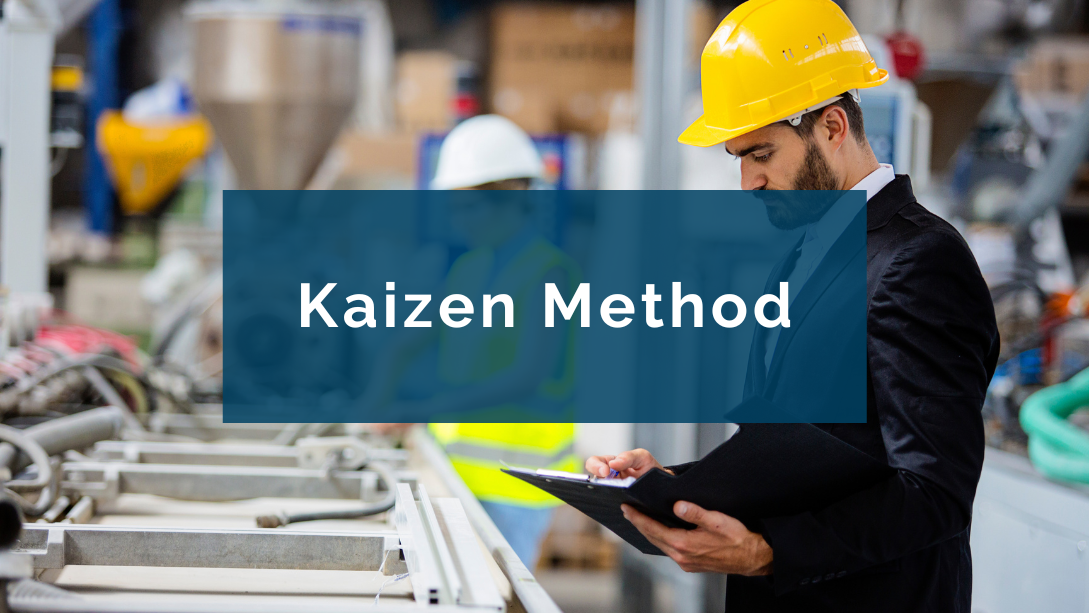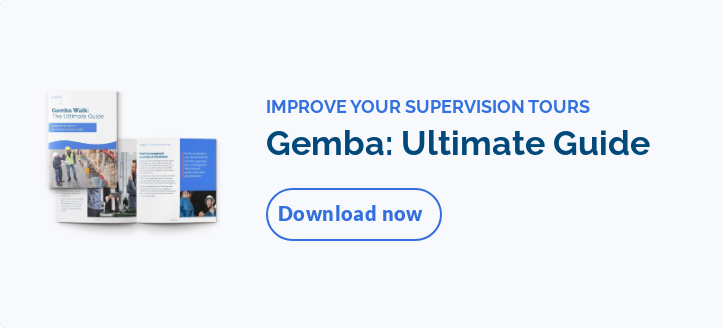What is the Kaizen methodology?
Kaizen, a Japanese term combining the words kai (“change”) and zen (“best”), is a continuous improvement method that fosters small, concrete, simple, inexpensive, and frequent improvements. Masaaki Imai, the founder of the Kaizen Institute, popularized it worldwide.
Also considered a philosophy, Kaizen involves the commitment of all stakeholders. Every employee, whatever his or her position, is invited to reflect on their work environment and make constructive suggestions for improving productivity.
Color-coded systems for managing paper files are a good example of small, concrete improvements that are well-established in most organizations. This efficient, zero-cost filing method minimizes wasted time.
Fundamental principles of the Kaizen philosophy
The principles of Kaizen may vary slightly according to different interpretations and schools of thought, but here are those most often found:
1. Improve continuously
The essence of Kaizen lies in the principle of continuously improving. This means that business processes must be constantly optimized and that every little improvement counts.
2. Empower employees
Kaizen relies on the active participation of all employees, from senior managers to workers. Everyone is encouraged to suggest ideas for improvement, creating a culture of engagement and innovation. This bottom-up approach is crucial to identifying problems and finding solutions that can often elude management.
3. Think long term
Kaizen isn't just about solving immediate problems; it's about the long term. Manufacturers who adopt this method must be prepared to invest time and resources in continuous improvements that will pay off over time.
4. Act immediately
Another Kaizen characteristic is the emphasis on immediate action. When problems are identified, corrective action is taken without delay to implement improvements swiftly, transforming obstacles into opportunities and ensuring that the workflow remains uninterrupted.
5. Reduce waste
One of the key concepts of Kaizen is reducing waste or “Muda”, i.e., anything that doesn't add value for the customer. Manufacturers must identify and eliminate such waste to optimize their efficiency.
6. Standardize processes
Once improvements have been made, new practices must be standardized to maintain the gains and facilitate future improvements. This includes documenting processes, providing ongoing employee training, and monitoring key performance indicators (KPIs) to ensure that the changes bring significant results.
7. Go to Gemba
Kaizen emphasizes the importance of walking the shop floor, i.e., go to “Gemba,” to observe processes in action directly. This enables managers and employees to see the real problems and better understand operators' challenges.
8. Foster a culture of improvement
Developing a culture of continuous improvement requires more than just tools and techniques; it demands a Kaizen mindset, where every team member is committed to identifying opportunities for enhancement and driving positive change across the entire organization.
9. Know your customer
Kaizen is all about customer satisfaction. All improvements aim to add value from the customer's point of view, whether in terms of quality, cost, or delivery time.
Benefits of the Kaizen method
Implementing Kaizen brings several significant benefits to companies, particularly in a manufacturing context:
- Improved production quality: Kaizen focuses on reducing defects and continuously optimizing processes, which directly impacts quality control, ensuring that production standards are consistently met and that products better align with customer expectations.
- Increased productivity: By eliminating waste and optimizing processes, teams can complete more tasks in less time to increase efficiency and productivity.
- Improved health and safety measures: Kaizen helps reduce accidents and create a safer working environment by identifying and correcting unsafe working conditions.
- Greater team involvement: Kaizen encourages every team member to actively participate in the improvement process, boosting motivation and collaboration within the company.
- Reduced production costs: Kaizen reduces unnecessary costs and optimizes the use of resources by targeting and eliminating waste.
- Greater adaptability: Kaizen promotes flexibility and responsiveness to market changes, enabling companies to remain competitive over the long term.
Tools to support continuous improvement
Continuous improvement requires methods and tools to structure and support such efforts.
Lean Manufacturing and 5S
Lean Manufacturing is a systematic management methodology designed to eliminate waste and improve process efficiency. Its two main objectives are customer satisfaction and individual employee success.
Derived from Lean Manufacturing, the 5S method, which structures the workspace in five stages – Sort, Set in Order, Shine, Standardize, Sustain – is an effective complement as it helps maintain an organized, high-performance work environment.
PDCA (Plan-Do-Check-Act)
Also known as the Deming wheel, PDCA is a repetitive cycle that includes four steps: planning and implementing improvements, checking results, and acting accordingly. It is at the heart of the Kaizen approach.
DMAIC (Define, Measure, Analyze, Improve, Control)
Mainly used in Six Sigma projects, the DMAIC process offers a rigorous structure for identifying, analyzing, and resolving problems while ensuring the sustainability of improvements. This method assures that the changes made bring tangible benefits and are maintained over the long term.
5 Whys
This simple technique identifies the root cause of a problem by asking the question “Why?” five times. The 5 Whys method is particularly useful for avoiding superficial solutions, getting to the root of problems, and gaining a deeper understanding of processes.
Kanban
Kanban is a visual workflow management system that helps manage and improve production in real-time by identifying bottlenecks and adjusting tasks accordingly.
Tips for a sustainable continuous improvement culture
Communicate objectives clearly
Objectives must be clear, specific, and measurable. Ensure that every employee understands both individual and global objectives so that everyone is aligned on a common goal.
Use the right communication channels for each situation, and encourage open dialogue to clarify expectations and engage the whole team.
Operate stable processes
Before embarking on a suggestion program, existing processes must be controlled and stable.
For example, an assembly plant experiencing production stoppages due to supply problems must first and foremost resolve these to guarantee operational stability.
In Lean jargon, this means removing the big rocks blocking productivity and then improving processes continuously.
Introduce small changes gradually
As we have seen, the Kaizen methodology is based on the idea that small, regular changes lead to significant improvements over the long term. Instead of seeking to radically transform a process, make minor adjustments. Easier to accept and implement, they accumulate over time to create significant gains in productivity and quality.
Organize regular Kaizen events
Kaizen events (also known as “kaizen blitz” or “kaizen workshop”) foster collaboration and innovation by allowing teams to focus intensively on specific problems and implement effective solutions in a condensed period.
Use a Daily Management System (DMS) like UTrakk
UTrakk is a continuous improvement software that enables managers to structure and monitor improvement efforts efficiently. With features such as digital Gemba Walks and checklists, actions and opportunities, project tracking, and dashboards, the platform helps quickly identify problems and improvement opportunities, create action plans, and track them – all through a seamless and collaborative process.
By centralizing continuous improvement indicators, UTrakk makes progress easy to measure. This facilitates the management of Kaizen initiatives and the implementation of effective, impactful changes into daily operations.
Kaizen: Implementing a long-lasting transformation with continuous improvement
Kaizen transforms the company one step at a time. By focusing on continuous improvement, involving all employees, and using the right tools, factories can improve quality and productivity, reduce costs, enhance safety, and increase customer satisfaction.
A small gesture today can trigger a big change tomorrow. With successful implementation of this philosophy in your company's DNA, you open the door to a silent revolution, where every improvement, no matter how small, shapes a more efficient, agile, and innovative future.
So why wait? Take this philosophy head-on and start with a slight correction to a business process or practice. Test, adjust, and repeat. This is how, through concrete and repeated actions, you can sustain improvements and build a thriving culture of continuous improvement.









